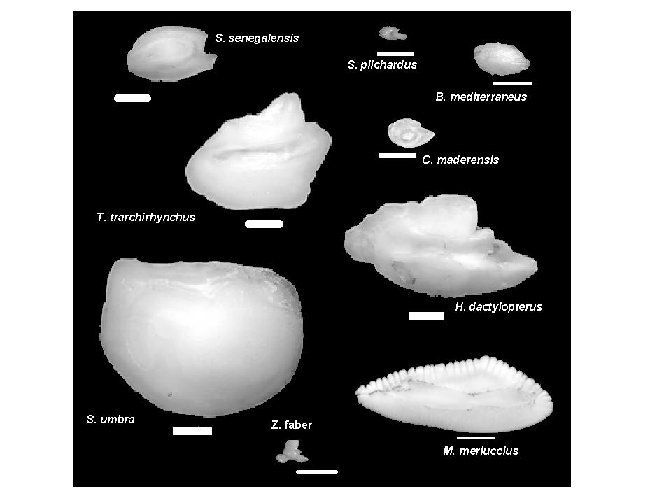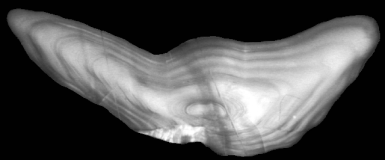




Site best viewed with 1024 x 768 resolution
Why study otoliths?
|
Since E. Koken in 1884 observed that each species of Teleostean fish is characterised
by having otoliths with particular characteristics (shape and size), otolith morphology
has been studied in order to identify species and fauna fossils, study the diets of
ictiovorous species from stomach contents as well as being used in archaeological
studies. Otolith sagittae are also used to identify intraspecific (determining populations in a
species) and interspecific (establishing affinities
and differences between species) relations.
Moreover, otolith growth is closely related to the fish's growth and the environmental changes in the fish's habitat. The variation in the proportions of the components that make up the otolith causes the growth rings to form, following a daily and seasonal periodicity. This characteristic is used to determine the age of fish and is very useful in studies on growth, recruitment and mortality, which are necessary for learning about population dynamics. Other current studies focus on the chemical composition and the microstructures of otoliths and their relationship to the environment. |

